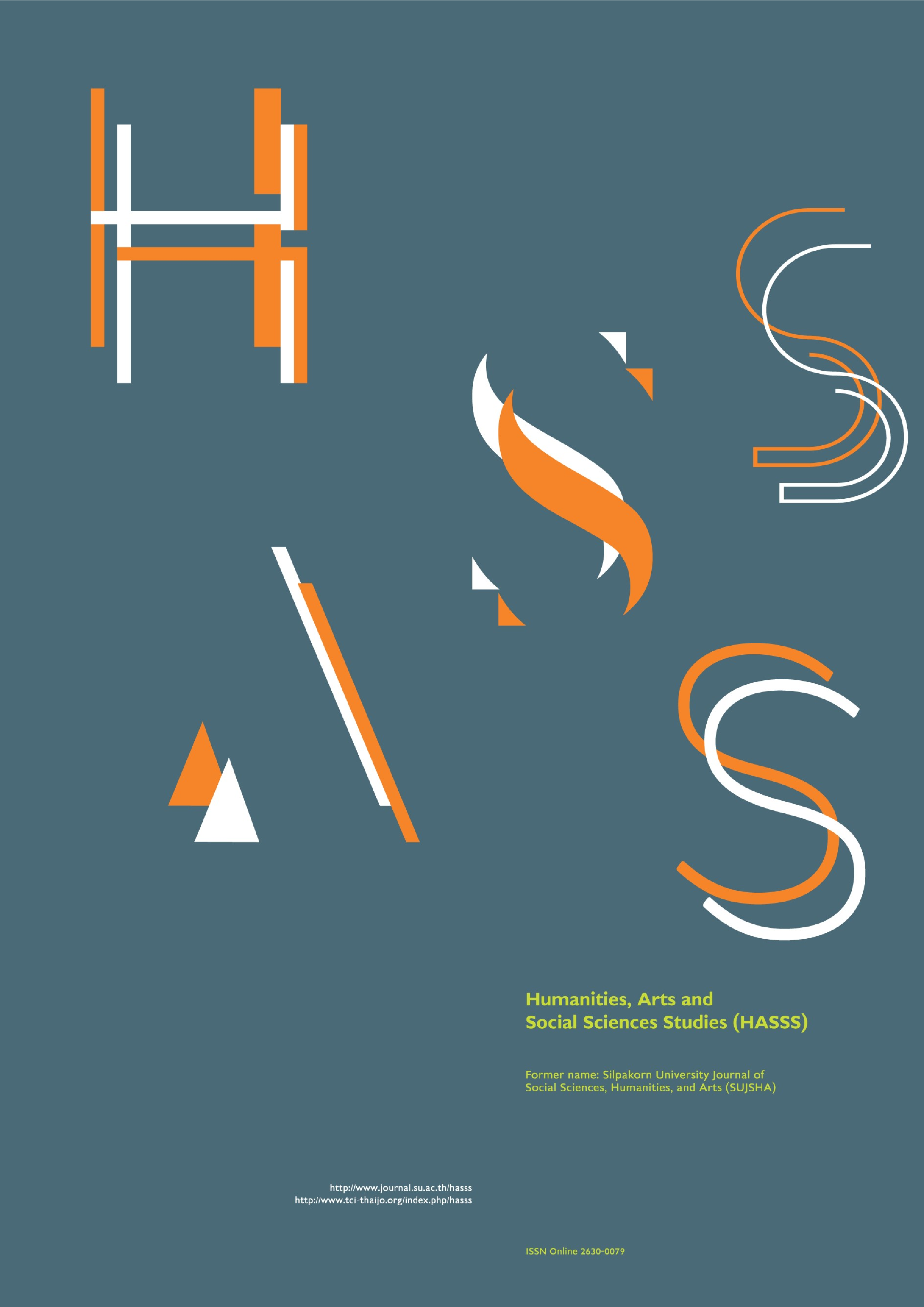Khum Chao: The changes of style in Chiang Mai’s governor houses in the period of Western-colonization
Main Article Content
Abstract
The Western-style Khum Chao (governor’s house) is a building complex that can still be seen in the city of Chiang Mai. The buildings were influenced by Western architecture in terms of architectural style, decoration, and functionality. This research aimed to study the reasons for building Western-style governor’s houses in Chiang Mai despite the fact that the buildings were formerly built in the traditional Lanna style. Presumably, Siamese influences on Chiang Mai affected the construction of Western-style governor’s houses. In this research, it was found that the Western-style governor’s house was clearly identifiable in the period of Chao Inthawichayanon, the seventh ruler of Chiang Mai. The popularity for building Western-style governor’s houses continued until the period when Chiang Mai was annexed as part of Siam, when the administration of Monthon Thesapiban (literally, local government) was adopted. The Western-style governor’s house changed from its original pattern to a functional layout. However, the research found that during the transformation indicates that the rulers of Chiang Mai did not directly accept architectural styles from foreign countries but through Siam, with its growing influence on Chiang Mai. Thus, the Western-style governor’s house in the framework discovered in this research may be called Siamese-influenced building.
Downloads
Article Details

This work is licensed under a Creative Commons Attribution-NonCommercial-NoDerivatives 4.0 International License.
All rights reserved. Apart from citations for the purposes of research, private study, or criticism and review,no part of this publication may be reproduced, stored or transmitted in any other form without prior written permission by the publisher.
References
Arkarapotiwong, P. (2019). Burirat Palace (Ma-ha-in). Chiang Mai: Chiang Mai University. [in Thai]
Bock, C. (1986). Temples and Elephants: Travels in Siam in 1881-1882. Oxford: Oxford University Press.
Boonjamnong, C. (2016). Krijitti House. [Online URL: https://asaconservationaward.com/index.php/2016-06-13-15-22-21/temple2548/288-kraichitti-art-gallery-ban-kraichitti] accessed on February 2, 2021. [in Thai]
Chungsiriarak, S. (2010). Western Architecture in Siam in the Period of King Rama IV-2480BE. Bangkok: Amarin Printing and Publishing. [in Thai]
Kambunruang, C. (2018). Khum Chao Burirat (Kaew Mung Muang). [Online URL: https://www.chiangmainews.co.th/page/archives/750878/] accessed on February 2, 2021. [in Thai]
Meechoobot, V. (2017). Back to the Past of Lanna. Bangkok: ChulaPress. [in Thai]
Meechoobot, W. (2019). Wieng Kaew from Royal Palace to Prison of Chiang Mai. [Online URL: https://www.silpa-mag.com/history/article_5445] accessed on September 1, 2020. [in Thai]
Nachiangmai, W. (1996). Rulers of Chiang Mai (Chaoluang Chiang Mai). Bangkok: Amarin Printing and Publishing. [in Thai]
Office of Art and Culture, Chulalongkorn University. (2016). Daraphirom. Bangkok: Amarin Printing and Publishing. [in Thai]
Ongsakul, S. (2008). The History of Lanna. Bangkok: Amarin Printing and Publishing. [in Thai]
Potiprasart, N. (1970). Architecture in Thailand. Bangkok: n.p. [in Thai]
Rittisorn, R. (2015). The Large Scale House in Lanna. Chiang Mai: Chiang Mai University. [in Thai]
Sansa, P. (2013). Lanna Palace the Signifier of Lanna’s Lords. Chiang Mai: MaxxPRINTINGtm. [in Thai]


